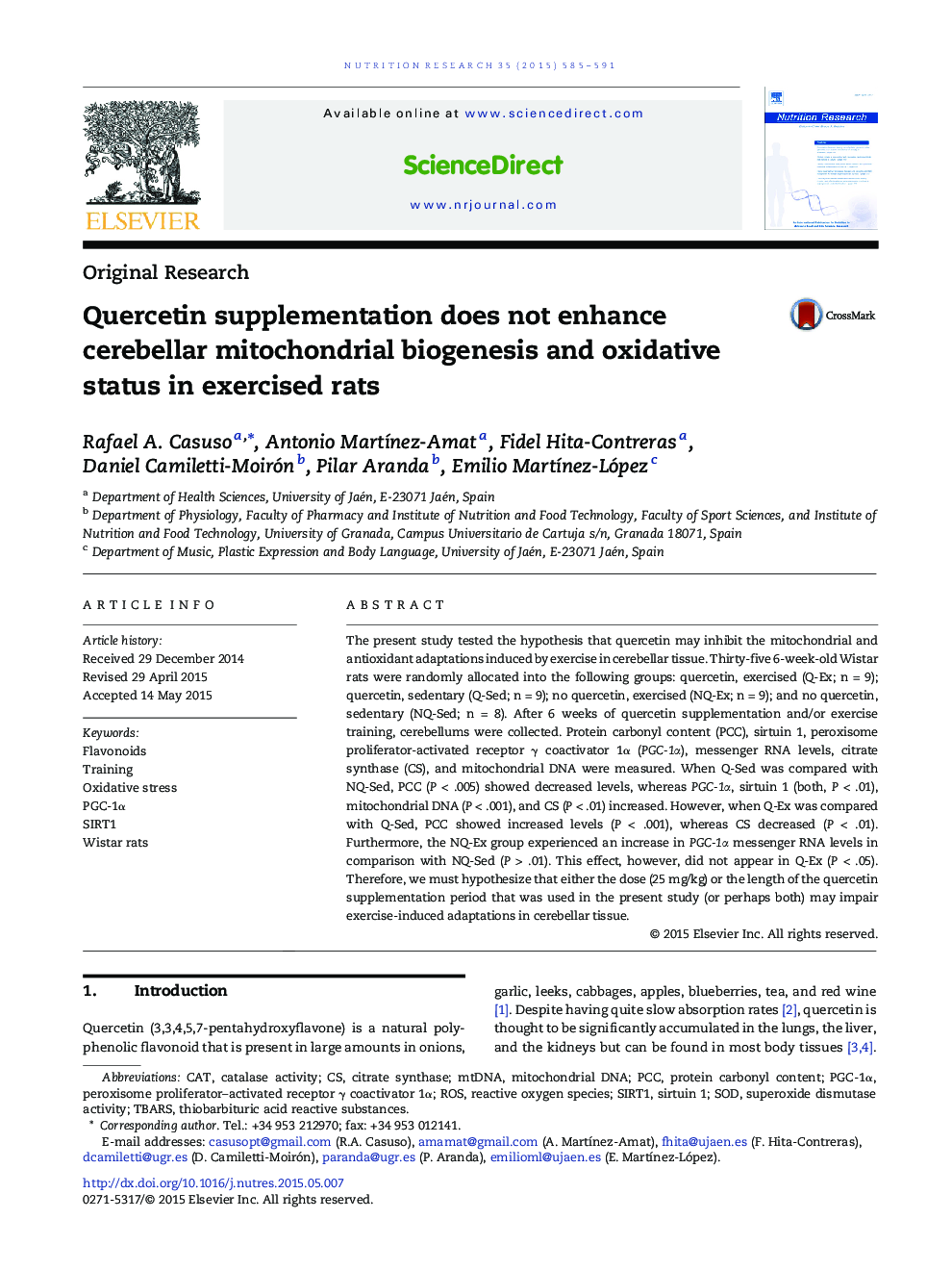| Article ID | Journal | Published Year | Pages | File Type |
|---|---|---|---|---|
| 2808902 | Nutrition Research | 2015 | 7 Pages |
The present study tested the hypothesis that quercetin may inhibit the mitochondrial and antioxidant adaptations induced by exercise in cerebellar tissue. Thirty-five 6-week-old Wistar rats were randomly allocated into the following groups: quercetin, exercised (Q-Ex; n = 9); quercetin, sedentary (Q-Sed; n = 9); no quercetin, exercised (NQ-Ex; n = 9); and no quercetin, sedentary (NQ-Sed; n = 8). After 6 weeks of quercetin supplementation and/or exercise training, cerebellums were collected. Protein carbonyl content (PCC), sirtuin 1, peroxisome proliferator-activated receptor γ coactivator 1α (PGC-1α), messenger RNA levels, citrate synthase (CS), and mitochondrial DNA were measured. When Q-Sed was compared with NQ-Sed, PCC (P < .005) showed decreased levels, whereas PGC-1α, sirtuin 1 (both, P < .01), mitochondrial DNA (P < .001), and CS (P < .01) increased. However, when Q-Ex was compared with Q-Sed, PCC showed increased levels (P < .001), whereas CS decreased (P < .01). Furthermore, the NQ-Ex group experienced an increase in PGC-1α messenger RNA levels in comparison with NQ-Sed (P > .01). This effect, however, did not appear in Q-Ex (P < .05). Therefore, we must hypothesize that either the dose (25 mg/kg) or the length of the quercetin supplementation period that was used in the present study (or perhaps both) may impair exercise-induced adaptations in cerebellar tissue.
